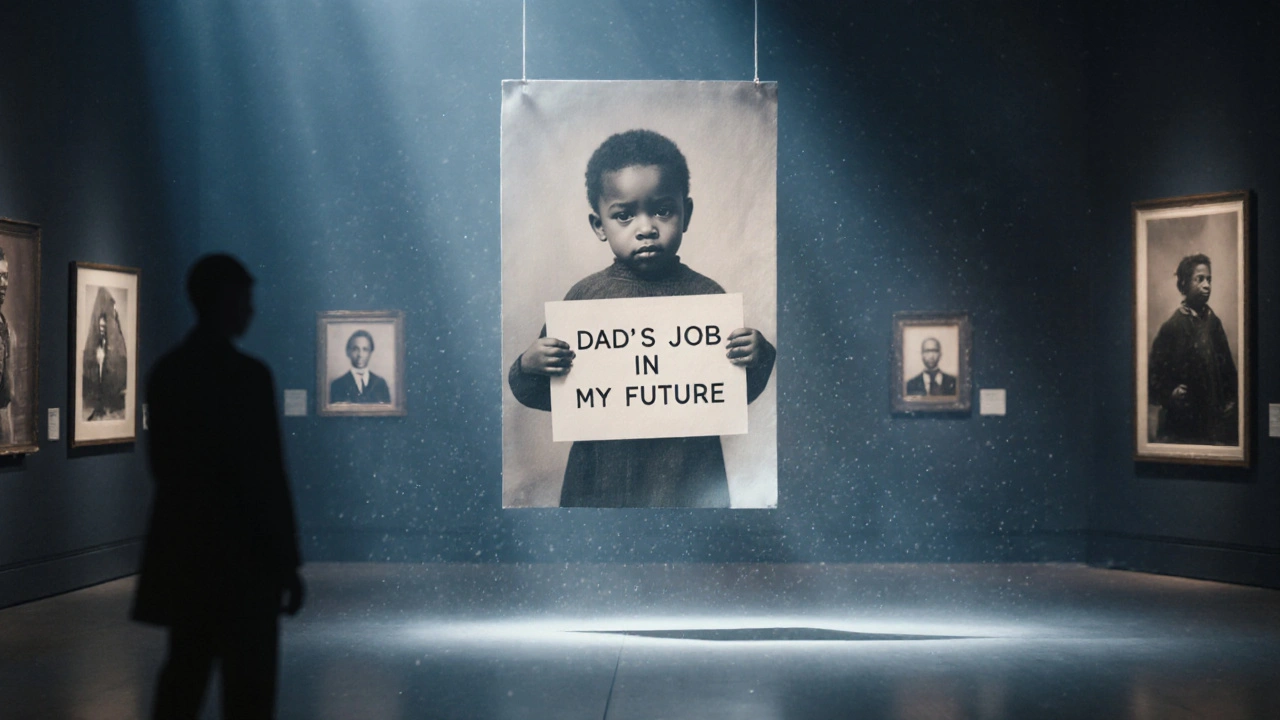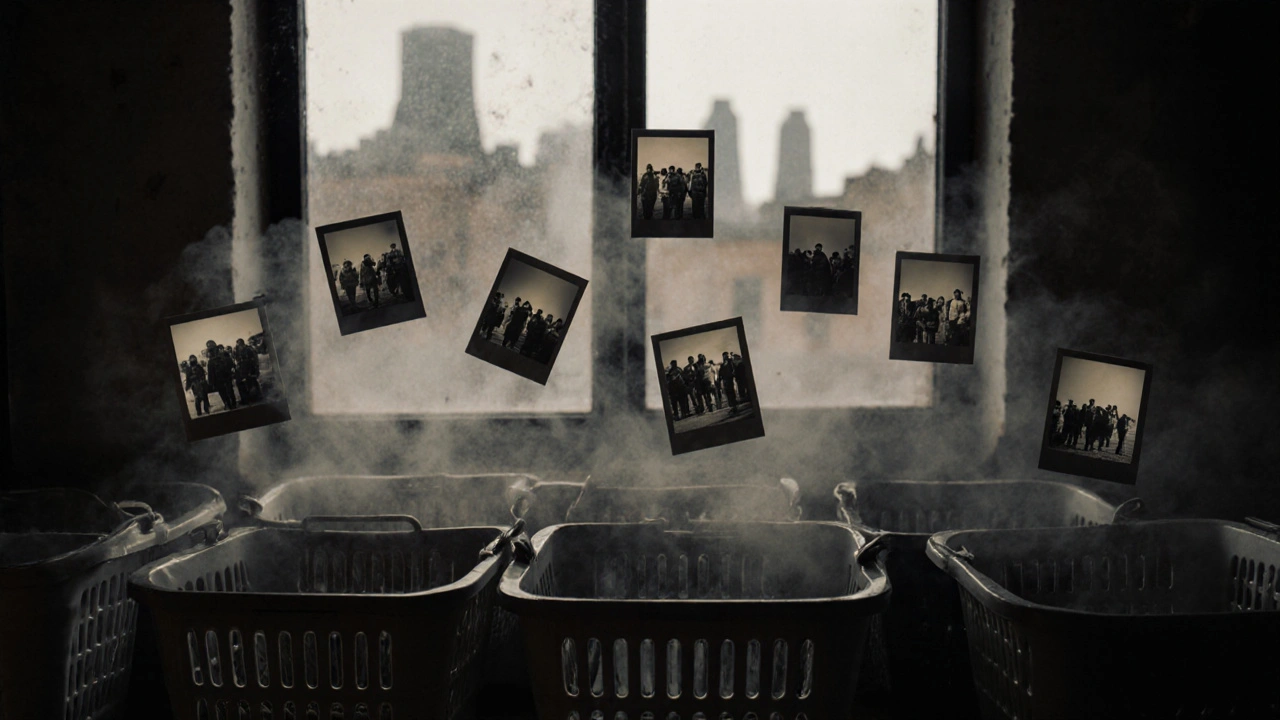London doesn’t just have museums-it has spaces where photographs are treated as fine art. Walk into these galleries and you’re not just looking at pictures. You’re stepping into moments frozen by masters, where light, shadow, and emotion are crafted like oil on canvas. If you’re after more than snapshots, if you want to see how a single image can move you like a symphony, these are the places you need to visit.
The Photographers’ Gallery
On Ramillies Street in Soho, The Photographers’ Gallery opened in 1971 and was the first in the UK dedicated solely to photography. It’s not a museum with permanent collections. Instead, it’s a living room for the medium-changing exhibitions every few weeks, always sharp, always daring. You’ll find work from emerging artists in East London lofts alongside iconic images from the 1980s punk scene. One recent show featured 30 black-and-white portraits of LGBTQ+ elders taken by a 24-year-old photographer from Leeds. The quiet power of those faces stayed with visitors for days. No ticket needed. Just walk in. The space is small, so you won’t be rushed. You can spend an hour or two, and leave feeling like you’ve seen something real.
Victoria and Albert Museum (V&A)
The V&A holds one of the largest photography collections in the world-over 800,000 images, from daguerreotypes to digital prints. But it’s not just about quantity. The museum curates photography like it’s sculpture. In 2024, their exhibit “The Camera as Witness” showed how photojournalists documented the 1984 UK miners’ strike. One image-a child holding a sign that read “Dad’s job is my future”-was printed life-size on fabric and hung in a dimly lit room. Visitors stood in silence. The V&A doesn’t just display photos. It tells stories through them. Their photography galleries are on Level 3, Room 105. Don’t miss the 19th-century albumen prints next to contemporary works by Zanele Muholi. The museum is free to enter. You’ll need time. Plan for at least two hours.
Barbican Art Gallery
Barbican’s photography shows are bold, experimental, and often political. They don’t play it safe. In 2023, their exhibition “Data Bodies” used AI-generated portraits of people who never existed, paired with real surveillance footage from London streets. The contrast was chilling. The gallery doesn’t label every image with a title or date. Sometimes, you’re left to wonder: Is this real? Who took it? Why? That’s the point. The Barbican treats photography as a question, not an answer. It’s in the heart of the Barbican Centre, near the lake. The space is modern, white, and quiet. You’ll hear your own footsteps. Most shows run three to four months. Check their website before you go-some exhibitions sell out weeks in advance.

Whitechapel Gallery
Whitechapel has been showing photography since the 1950s. It’s where Richard Avedon’s “In the American West” debuted in Europe. Today, it’s still the place where photography breaks rules. Their 2025 show, “London After Dark”, featured 12 photographers who spent six months capturing the city at 3 a.m.-empty tube stations, street cleaners, night-shift nurses, and people sleeping on park benches. One photo showed a man holding a plastic bag full of his belongings, his face lit by a flickering streetlamp. The gallery didn’t call it “homelessness.” It just showed it. No caption. No pity. Just presence. Whitechapel is in East London, near Aldgate East. It’s free. The staff are quiet, but they’ll talk to you if you ask. Don’t be afraid to say, “What do you think this means?”
Hayward Gallery
On the South Bank, the Hayward Gallery doesn’t have a permanent photography collection. But when they do a photography show, it’s unforgettable. In 2024, their exhibit “The Weight of Light” used 50 large-scale images from the 1970s and 80s, all shot by women photographers in post-industrial Britain. One image-a woman in a factory, her face lit by a single bulb, holding a broken gear-was printed at 3 meters tall. You had to step back to take it in. The gallery’s lighting is perfect: no glare, no shadows, just pure clarity. The Hayward’s architecture is brutalist, which makes the softness of the photos feel even more powerful. Tickets cost £18, but students and under-25s get in free. Arrive early. The best views are in the afternoon, when sunlight hits the glass walls.

Format International Photography Festival
This isn’t a single gallery. It’s a city-wide event that happens every spring. But in 2025, Format expanded into winter pop-ups. You’ll find installations in old bookshops, disused tube stations, and even a converted laundrette in Peckham. One pop-up in 2025 featured 100 Polaroids taken by refugees in Calais, displayed in a row of laundry baskets. Another showed drone photos of London’s rooftops, revealing hidden gardens and solar panels no one knew existed. Format is unpredictable. You might stumble on it. You might not. But if you’re in London between November and March, keep an eye on their Instagram. They post locations 48 hours before opening. No tickets. Just show up.
What to Bring and How to Visit
You don’t need a fancy camera. You don’t even need a notebook. But you do need patience. These galleries aren’t designed for quick scrolling. They’re made for sitting. Bring a light jacket-some rooms are kept cool to protect the prints. Wear comfortable shoes. You’ll be standing a lot. Avoid weekends if you can. Tuesdays and Wednesdays are quietest. Most galleries open at 11 a.m. and close at 6 p.m., but the Barbican and V&A stay open until 8 p.m. on Fridays. If you’re short on time, prioritize The Photographers’ Gallery and the V&A. They’re the most consistent. If you have three days, add Whitechapel and Format. Skip the big tourist spots like the National Portrait Gallery unless you’re after portraits of celebrities. This list is for art that makes you feel something deeper.
Why These Places Matter
Fine art photography isn’t about perfection. It’s about truth. These galleries don’t sell prints. They don’t push you to buy. They ask you to look. To feel. To wonder. In a world full of fast images-Instagram, TikTok, ads-these spaces are rare. They give photography the time it deserves. You won’t leave with a viral post. But you might leave with a new way of seeing your own city, your own life. That’s the quiet power of these galleries. They don’t shout. They wait. And when you finally stop rushing, they speak.
Are photography galleries in London free to enter?
Most major photography galleries in London are free, including The Photographers’ Gallery, Victoria and Albert Museum, Whitechapel Gallery, and Format pop-ups. The Hayward Gallery charges £18 for adults, but entry is free for students and people under 25. Always check the venue’s website before visiting, as special exhibitions may have different pricing.
What’s the best time to visit photography galleries in London?
Tuesdays and Wednesdays are the quietest days, especially in the morning. Weekends get crowded, especially at the V&A and Barbican. If you want to sit with a photograph without people behind you, aim for 11 a.m. on a weekday. Some galleries, like the V&A and Barbican, stay open until 8 p.m. on Fridays-perfect for after-work visits.
Do I need to book tickets in advance?
For most galleries, no. But for major exhibitions at the Barbican, Hayward Gallery, and Format pop-ups, advance booking is recommended. Some shows sell out weeks ahead, especially during the spring festival season. Check the gallery’s website 2-3 days before your visit. If it says “recommended to book,” do it.
Can I take photos inside the galleries?
Most galleries allow photography without flash, but some exhibitions have restrictions-especially if the work is on loan or copyright-protected. Look for signs near the entrance or ask at the front desk. Even if it’s allowed, consider this: the point of these spaces is to experience the art, not capture it. Put your phone away sometimes. Let the image stay in your mind.
Are there any photography galleries outside central London?
Yes. Whitechapel Gallery is in East London, and Format often hosts pop-ups in Peckham, Brixton, and Hackney. The Museum of London also has rotating photography exhibits in the City. If you’re willing to travel, the Southbank Centre’s Undercroft space sometimes features experimental photo installations. You don’t need to stay in Zone 1 to find great work.
